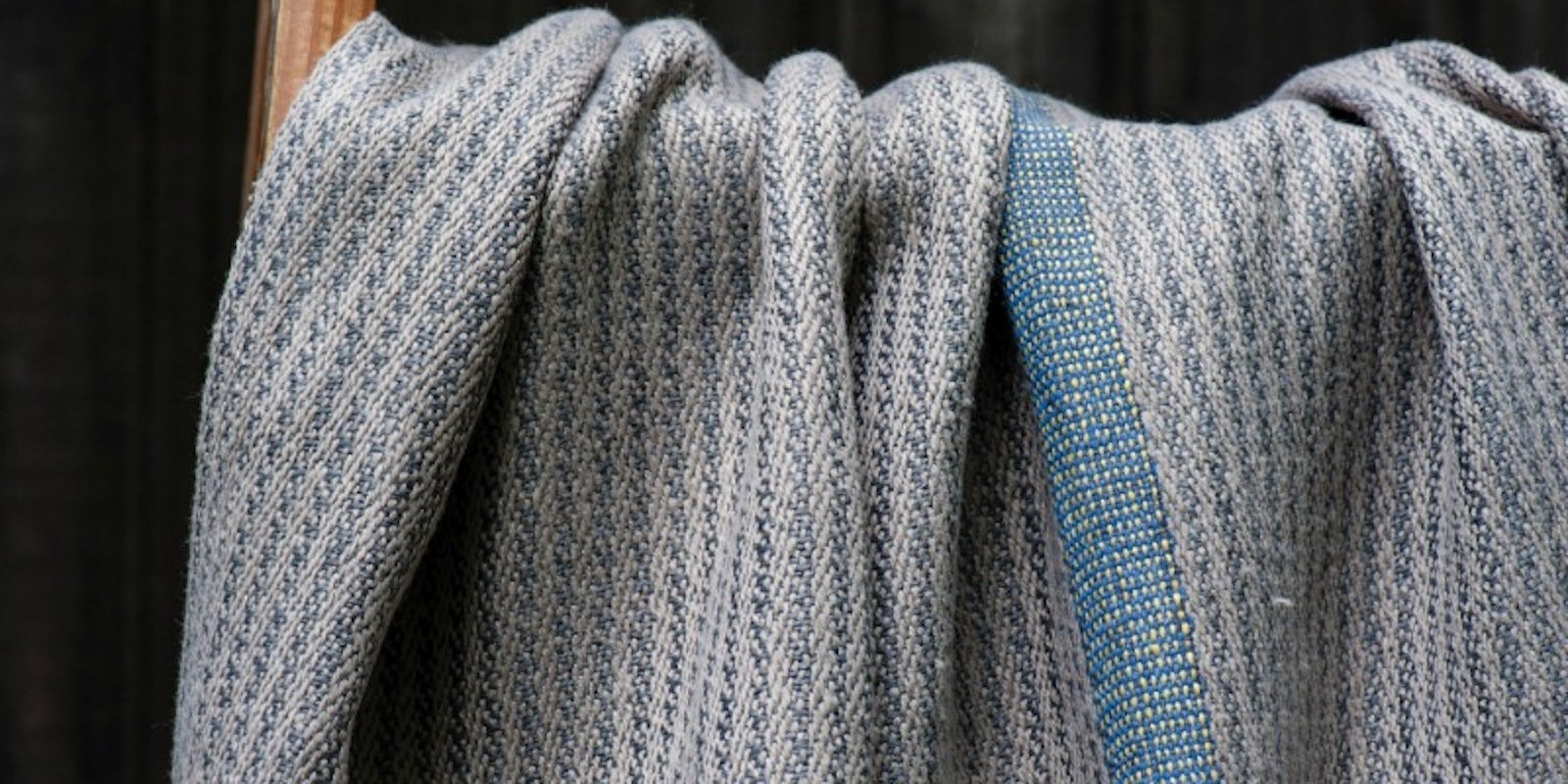As a weaver I love to learn about other weavers, their inspiration, and their design process. It gives me new ways to think about weaving and how I approach my own designs. In her Spotlight article for the January/February 2018 issue of Handwoven, Anne Laure Camilleri gives readers an inside look into the studio and mind of Marian Quanbeck Dahlberg and Väva Veve.
—Christina
Väva! Veve! has a whimsical ring to it. Both words väva and veve mean “weave” in Swedish and Norwegian. The memorable brand name conveys the sense of humor of a Minnesota artist who doesn’t take herself too seriously, but who is a dynamic designer-entrepreneur. Marian Quanbeck Dahlberg’s small company supports core values such as durability and environmental sustainability, while her handwoven textiles are infused with timeless beauty.
The designs and stunning color palette of her Cabin Series reflect a philosophy of life deeply rooted in the great American wilderness and the rustic simplicity of a Scandinavian log cabin. Her elegant designs conjure up Nordic aesthetics and feature complex weave structures reminiscent of Early American woven textiles. Väva! Veve! was officially established in 2009, and the stylish linens were juried less than a year later into the American Craft Council Show in St. Paul, Minnesota. It was a turning point that validated Marian’s new career as a professional handweaver. In her studios surrounded by nature, the artist continues the tradition of handweaving in America, a craft that renowned weaver and author Mary Meigs Atwater once described as a “true national popular art.” Marian’s primary intent is “to inspire joy and delight.” Mission accomplished.
Marian grew up in Roseville, Minnesota, and graduated from the University of Minnesota with a bachelor of science degree in interior design. She worked as an interior designer for over twenty years, taking an early interest in textiles and ultimately setting up her own weaving studio and fine linens label.
“I first designed and knit patterns for a small baby knitwear company until I bought a loom and took a weaving course at the Minnetonka Center for the Arts in 2000,” she said. “I discovered the art of weaving, and it opened up a whole new world. I had the chance to enter the class of Traudi Bestler although her program had limited openings. She covered the basic patterns featured in A Handweaver’s Pattern Book. For three years, we explored weave structures such as taqueté, overshot, and doubleweave, and some popular Scandinavian structures like Swedish lace or krokbragd in single and double point. We also worked on different types of four- to eight-harness floor looms. It was truly challenging. We learned how we could change things by treadling differently or by changing the tie-up. I got a good understanding of how the various engineered looms worked and how they impacted our weaving. Now I’m just focused on exploring twenty-four-harness weave structures.”
The choice of linen goes back to her Scandinavian heritage. “Linen is very close to my heart. Both my grandmother and mother had beautiful linen tablecloths that only came out for Sunday best because they were irreplaceable. They were highly valued and handed down for generations,” she says. Her first weaving experience with linen was a table runner she wove in a goose-eye block twill called Säterglänten Pattern using a coarse tow linen. It was a reminder of her family heirlooms, and everything fell into place. She knew then she would pursue weaving with linen: “Linen has a special tactile elegance, a connection to the earth that is honest.”
To read more about Marian and her weaving check out the rest of the article in the January/February 2018 issue of Handwoven!


